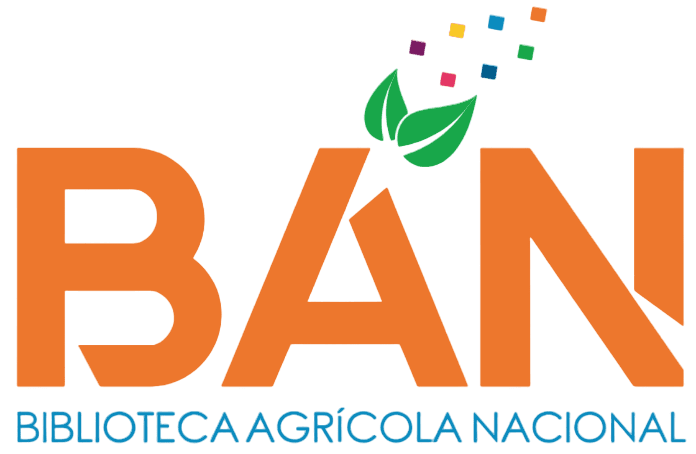Aislamiento e identificación de cepas nativas de Trichoderma spp. de campos de cítricos para el biocontrol de Cladosporium spp.
Loading...
Código QR
Authors
Cruz Solorzano, Angela Juana
Contact Email
Abstract
El control biológico es una alternativa útil de control de fitopatógenos por su amplio rango de hospedantes, nulo riesgo de toxicidad y sin generar resistencia. Siendo Trichoderma spp. el género de hongos con mayor uso por su características antagonistas de competencia, antibiosis, parasitismo, etcétera. El objetivo de este trabajo fue aislar e identificar cepas de Trichoderma spp. de campos comerciales de cítricos para evaluar su potencial antagonista contra tres especies de Cladosporium spp. en ensayos in vitro y en campo. En total se obtuvieron ocho aislamientos mediante la siembra de suspensión de suelo, los cuales se identificaron como T. asperellum (4), T. harzianum (2) y T. virens (2). Todos los aislamientos inhibieron el crecimiento de las tres especies de patógenos (C. ramotenellum, C. sphaerospermum y C. tenuissimum) en las pruebas de antagonismo de enfrentamiento en cultivo dual (53.86%, 51.7% y 56.19%) y reduciendo el tamaño de la colonia de Cladosporium spp. por efecto de los metabolitos volátiles de Trichoderma spp. en la técnica de placa invertida (28, 21.38 y 39.67 mm). En la prueba de efecto de metabolitos no volátiles, los filtrados de Trichoderma spp. redujeron el tamaño de colonia para C. ramotenellum (27.5 mm) y C. sphaerospermum (23 mm), pero no para C. tenuissimum. Los mejores aislamientos por especie de las pruebas in vitro fueron A-4, A-5 y A-8, los cuales se multiplicaron en arroz para realizar cuatro aplicaciones en campo como alternativa de reemplazo de un manejo convencional (difenoconazole, ácido peracético y Bacillus subtilis) de un lote comercial de mandarina W. Murcott en Chincha-Ica. Se evaluó la incidencia, severidad y AUDPC, los resultados fueron estadísticamente iguales al tratamiento testigo (manejo convencional). Estos resultados respaldan el efecto positivo de Trichoderma spp. de ser implementando en un Manejo Integrado de Cladosporium spp., sin riesgo de residualidad y menores costos.
Biological control is emerging as a valuable alternative for managing phytopathogens due to its broad host range, zero toxicity risk and absence of resistance development. Trichoderma spp. is one of the most widely used fungal genera due to its antagonistic characteristics of competition, antibiosis, parasitism, among others. The objective of this study was to isolate and identify Trichoderma spp. strains from commercial citrus fields and evaluate their antagonistic potential against three species of Cladosporium spp. in in vitro and field trials. A total of eight isolates were obtained from soil suspension plating, which were identified as T. asperellum (4), T. harzianum (2) and T. virens (2). All isolates inhibited the growth of the three pathogen species (C. ramotenellum, C. sphaerospermum and C. tenuissimum) in dual-culture antagonism tests (53.86%, 51.7% and 56.19%) and reduced Cladosporium spp. colony size through the effect of volatile metabolites from Trichoderma spp. in the inverted plate technique (28, 21.38 and 39.67 mm). In the non-volatile metabolite effect test, Trichoderma spp. filtrates only reduced colony size for C. ramotenellum (27.5 mm) and C. sphaerospermum (23 mm), but not for C. tenuissimum. The best isolates per species based on in vitro tests were A-4, A-5 and A-8, which were multiplied on rice for four field applications as an alternative to conventional management (difenoconazole, peracetic acid and Bacillus subtilis) in a commercial W. Murcott mandarin lot in Chincha-Ica. Incidence, severity and AUDPC were evaluated and the results were statistically equal to the control treatment (conventional management). These results support the positive effect of Trichoderma spp. as a viable option for implementation in an Integrated Management of Cladosporium spp. without residual risk and lower costs.
Biological control is emerging as a valuable alternative for managing phytopathogens due to its broad host range, zero toxicity risk and absence of resistance development. Trichoderma spp. is one of the most widely used fungal genera due to its antagonistic characteristics of competition, antibiosis, parasitism, among others. The objective of this study was to isolate and identify Trichoderma spp. strains from commercial citrus fields and evaluate their antagonistic potential against three species of Cladosporium spp. in in vitro and field trials. A total of eight isolates were obtained from soil suspension plating, which were identified as T. asperellum (4), T. harzianum (2) and T. virens (2). All isolates inhibited the growth of the three pathogen species (C. ramotenellum, C. sphaerospermum and C. tenuissimum) in dual-culture antagonism tests (53.86%, 51.7% and 56.19%) and reduced Cladosporium spp. colony size through the effect of volatile metabolites from Trichoderma spp. in the inverted plate technique (28, 21.38 and 39.67 mm). In the non-volatile metabolite effect test, Trichoderma spp. filtrates only reduced colony size for C. ramotenellum (27.5 mm) and C. sphaerospermum (23 mm), but not for C. tenuissimum. The best isolates per species based on in vitro tests were A-4, A-5 and A-8, which were multiplied on rice for four field applications as an alternative to conventional management (difenoconazole, peracetic acid and Bacillus subtilis) in a commercial W. Murcott mandarin lot in Chincha-Ica. Incidence, severity and AUDPC were evaluated and the results were statistically equal to the control treatment (conventional management). These results support the positive effect of Trichoderma spp. as a viable option for implementation in an Integrated Management of Cladosporium spp. without residual risk and lower costs.
Description
Universidad Nacional Agraria La Molina. Facultad de Agronomía. Departamento Académico de Fitopatología
Keywords
Control biológico
Citation
Date
2025
Collections
Seleccionar año de consulta:
Licencia de uso

Excepto si se señala otra cosa, la licencia del ítem se describe como info:eu-repo/semantics/openAccess

